In our quest for convenience, we often embrace materials that quietly weave into our daily routine. Styrofoam is one such silent companion, holding our hot coffee, cushioning our new gadgets, and insulating our homes.
But do we really know what Styrofoam is?
The name ‘Styrofoam’ often conjures images of white, lightweight foam cups and containers, yet, that's a common misconception!
The reality is a bit more complex and fascinating.
In this blog, we’ll dive into the world of Styrofoam, shedding light on its true identity, types, and pathway towards its responsible usage and disposal.
Join me as we unravel the Styrofoam saga, exploring its impact on our planet and how we can steer towards a more sustainable lifestyle.
What is Styrofoam Made Of?
It's crucial to first lay down what Styrofoam is before we unravel its composition. Styrofoam is not just any foam, it's a trademarked brand of closed-cell extruded polystyrene foam, commonly abbreviated as XPS.
Now, this is important, Styrofoam is 'extruded', not 'expanded' polystyrene foam—which is another discussion.
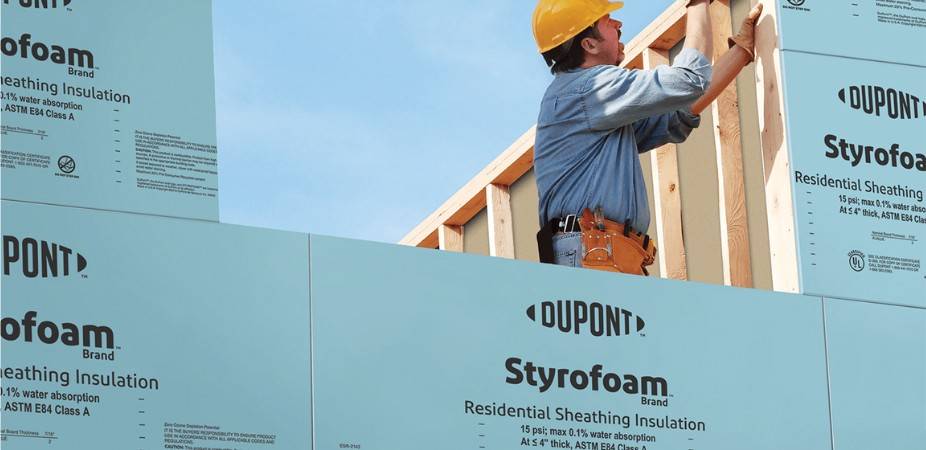
The name 'Styrofoam' has almost become synonymous with disposable foam products, yet it holds a unique identity in the realm of materials.
At the heart of Styrofoam lies its chemical composition.
It primarily springs from a monomer called styrene. Styrene, a derivative of benzene, undergoes a polymerization process, giving birth to polystyrene - the core material of Styrofoam.
The journey of styrene from a liquid hydrocarbon to the foam we see is nothing short of a chemical marvel. Its transformation entails a reaction under controlled conditions which leads to the formation of a lightweight yet sturdy foam.
And interestingly, 98% of Styrofoam is just air!
Note: There is no proper way to recycle #4 Styrofoam or Low-Density Polyethylene foam (LDPE/PELD). The best option is to reuse them as much as possible. If that's not possible, you need to send them to landfills.
How Styrofoam Came to Being
The tale of Styrofoam takes us back to the early 1940s at Dow's Chemical Physics Lab. It was here that researchers stumbled upon a method to make foam from polystyrene, marking the birth of Styrofoam.
The process they discovered was unique, leading to the creation of a material that was versatile yet inexpensive.
The trademark of Styrofoam eventually found its home with DuPont, a name that resonates with innovation in the material science domain. DuPont's ownership of the trademark further cemented Styrofoam's position in the market, making it a go-to choice for a variety of applications.
The narrative of Styrofoam, from its chemical inception to its commercial journey, reflects a blend of scientific curiosity and entrepreneurial foresight. And as we delve deeper, it unveils a dialogue between modern convenience and environmental responsibility.
Styrofoam Vs Expanded Polystyrene (EPS): Delving Deeper
Ah, the maze of materials!
It’s fascinating how a single base substance can morph into varied forms with distinct characteristics.
Let’s delve deeper into this with our two contenders: Styrofoam and Expanded Polystyrene (EPS).
What Is Expanded Polystyrene (EPS)?
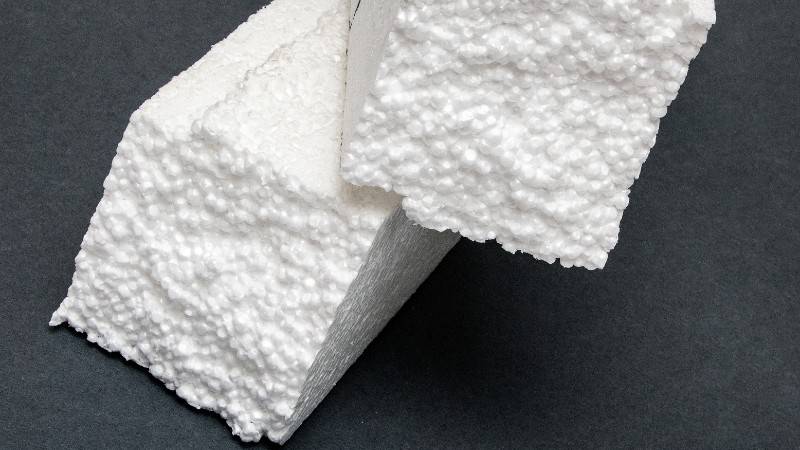
Expanded Polystyrene, or EPS as it's commonly known, is like a cousin to Styrofoam.
Both spring from the petroleum lineage, sharing a familial link yet holding distinct identities.
Expanded Polystyrene (EPS) is a rigid, closed-cell, thermoplastic foam material crafted from solid polystyrene beads. These beads are birthed from the polymerization of styrene monomer, with an expansion gas called pentane nestled within them.
This composition unfolds into a foam that stands firm, yet embraces a light demeanor, embodying the essence of thermoplasticity.
To paint a clearer picture, let's bring in Thermocol. It's a brand name under which EPS is marketed by BASF, in contrast to Styrofoam, championed by Dow Chemicals.
Thermocol and Styrofoam, while bearing resemblance in appearance and functionality, are made through different processes. Thermocol is essentially EPS, which is created by expanding the polystyrene beads in a mold using steam. On the other hand, Styrofoam is created using pushing (or extruding) the polystyrene beads through a die to reduce its cross-section.
Key Differences and Similarities
Now, let's juxtapose Styrofoam and EPS to tease out their differences and similarities.
Though siblings under the polystyrene family, their journey from petroleum to foam takes different routes.
While EPS (Thermocol) is birthed through a process of expansion, Styrofoam (XPS) comes to life through extrusion, a process that melds the beads together under pressure and high temperature, creating a foam with a finer texture and higher insulating properties.
Here's a little table to encapsulate the differences and similarities between Styrofoam and EPS for a clearer understanding:
| | Expanded Polystyrene (EPS) |
|---|
| | |
| | |
| Finer, closed-cell structure | Coarser, open-cell structure |
| | |
| | |
| Similar, derived from petroleum | Similar, derived from petroleum |
Through this comparative lens, we can understand the differences between Styrofoam and EPS, despite their common ancestry.
Types of Styrofoam: Exploring The Varieties
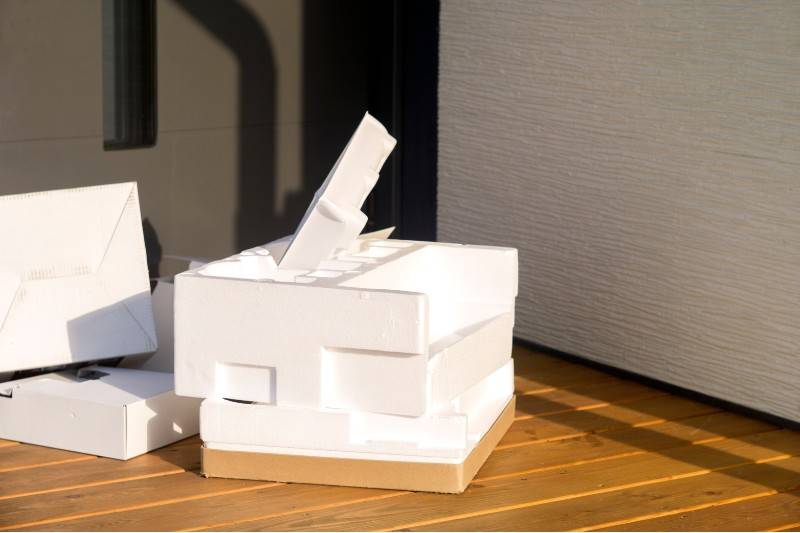
The realm of Styrofoam is not monolithic; it's a tapestry of types, each with its unique attributes and applications. As we venture into exploring these varieties, we deepen our understanding and inch closer to making informed choices.
So let's unfold the spectrum of Styrofoam types that grace our lives.
Common Types of Styrofoam
1. Extruded Polystyrene Foam (XPS)
The quintessential Styrofoam, known for its smooth surface and insulating prowess. It's a common ally in construction for insulation and also finds its place in crafting and modeling.
2. Expanded Polystyrene Foam (EPS)
While not a type of Styrofoam, EPS is a close relative. It’s lighter and has a rougher texture, often used for packaging fragile items owing to its cushioning capabilities.
3. High-Impact Polystyrene (HIPS)
This variant is a concoction of polystyrene and rubber, which elevates its strength, making it a choice material for durable applications.
4. Styrofoam Insulation Boards
A specialized form tailored for insulation purposes, these boards are a staple in the construction realm, offering a shield against the cold and heat.
Identifying Different Types of Styrofoam
Now, how do we distinguish between these types?
Here are a few pointers to help you navigate through the Styrofoam landscape:
- Texture: XPS has a smooth texture, while EPS has a rough, bead-like texture. HIPS, on the other hand, feels tougher and more rigid.
- Color: Styrofoam types may sport different colors which can be a cue. For instance, XPS is often blue or pink, while EPS is usually white.
- Application: The use of the foam can also hint at its type. For insulation, XPS and insulation boards are common, while EPS is a regular for packaging.
- Density and Flexibility: XPS and insulation boards are denser and less flexible compared to EPS.
As we peel the layers off the various types of Styrofoam, we edge closer to understanding this material that has seamlessly blended into our lives.
It’s fascinating, isn’t it?
The more we know, the better we can navigate through the material maze in our quest for sustainability.
There Is No Such Thing as Styrofoam Cups!
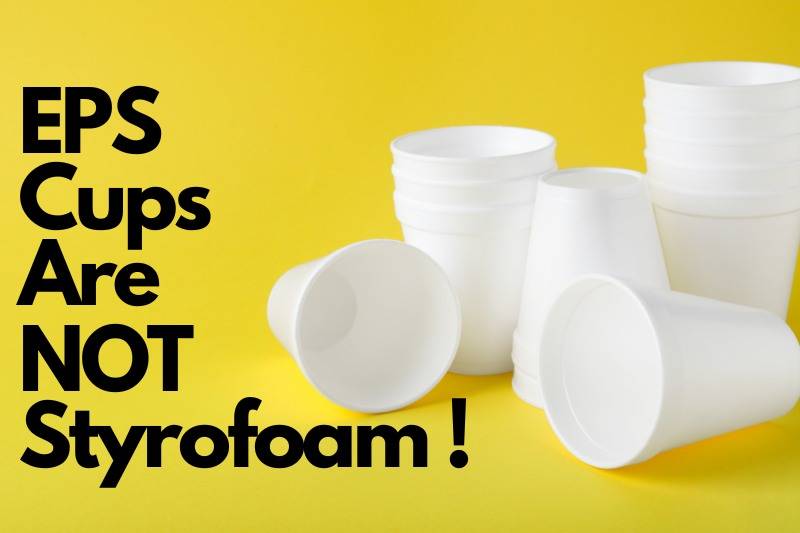
It's a common scenario. You grab a foam cup of coffee, and the word "Styrofoam" instinctively comes to mind.
But here's a fun fact: there's no such thing as a Styrofoam cup!
It's a misconception that has smoothly navigated through our daily vocabulary. Let’s sift through the foam and find out what Styrofoam really is.
When the word “Styrofoam” echoes, images of foam cups, fast-food containers, or packaging materials often dance before our eyes. However, if you are mingling in construction circles, you'd know better. The real Styrofoam, trademarked by DuPont, is quite the opposite of these disposable items. They're mainly used as insulation material for construction works.
Now, let’s take a microscopic dive. If you peek at the white EPS foam known for crafting disposable cups and packaging, you’d spot gaps between the foam cells.
These gaps, albeit tiny, are gateways for air and moisture over time, diminishing the material’s compression strength.
Ever squashed a foam cup effortlessly? That’s the low compression strength in action!
Now that the curtain has been lifted, it's clear that Styrofoam™ is an entirely different material—a rigid board insulation born in 1941, trademarked, and donned in a distinctive blue or grey attire. So, the next time you encounter white foam cups or containers, remember, they are EPS, polystyrene, or simply foam, not Styrofoam.
Can You Recycle All Types of Styrofoam?
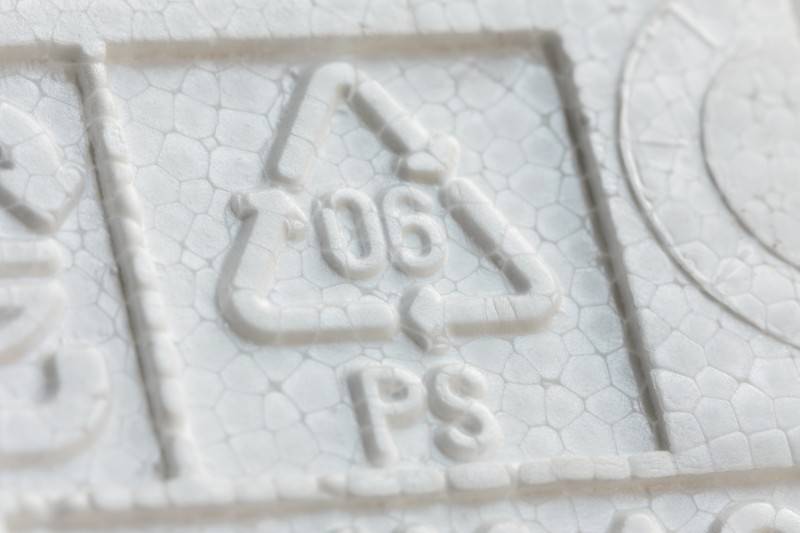
Recycling is a word that resonates with hope in our journey towards a sustainable planet. It embodies the idea of giving materials a second chance, reducing the burden on Mother Earth.
When it comes to Styrofoam, the narrative of recycling unfolds with nuances that are worth delving into.
Recyclability of Styrofoam
Not all Styrofoam is created equal, especially when it comes to recycling Styrofoam. The crux of the matter lies in the type of foam we're dealing with.
For instance, Styrofoam #6 Expanded Polystyrene (EPS) wears the recyclable badge.
Yes, you heard it right!
EPS can be recycled, and enterprises like GreenCitizen are paving the path by accepting EPS for recycling. They have shouldered the mission of diverting Styrofoam from landfills, leading it towards a new life.
If you live in the San Francisco Bay area, you can just visit our Burlingame Eco Center and drop off EPS foams for recycling.
The Journey of #4 Styrofoam: From Your Home to Landfill
On the flip side, Styrofoam #4 Low-Density Polyethylene foam (LDPE/PELD) often finds its journey ending at landfills.
Unlike its cousin EPS, LDPE foam recycling is not as straightforward. The limited recycling facilities and the lack of awareness often escort Styrofoam #4 to the landfills, where it sits for eons, refusing to break down.
The statistics are a somber reflection of this reality. The recycling rates for Styrofoam are dishearteningly low, painting a picture of a material in dire need of recycling infrastructure and awareness.
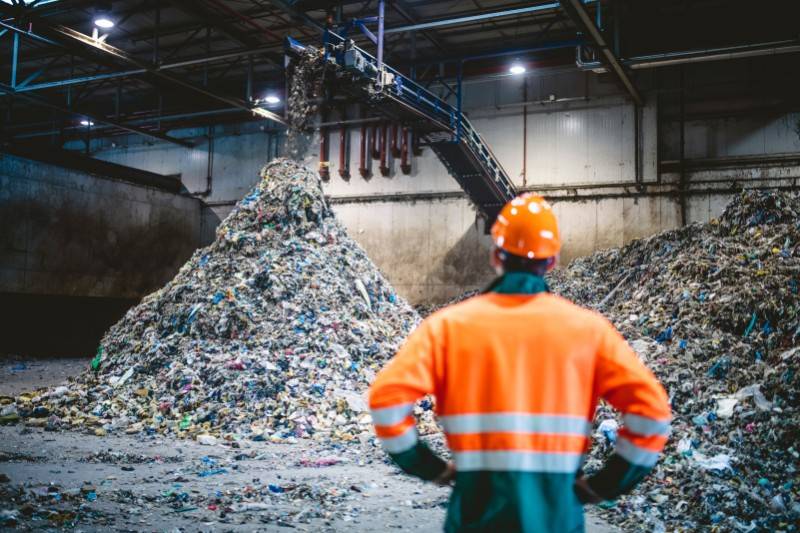
The environmental implications are vast.
Landfills brimming with Styrofoam contribute to the leaching of chemicals into the soil and the emissions of greenhouse gases.
This stark contrast in the recyclability of different types of Styrofoam unveils a complex narrative. It sheds light on the pressing need for enhanced recycling facilities, education, and sustainable practices.
As we sift through the types of Styrofoam, the call for action resonates louder, urging us to champion the cause of recycling and tread lightly on our beloved planet.
The journey of understanding Styrofoam's recyclability is a step towards fostering a culture of informed recycling practices. It's about igniting conversations, sparking change, and nurturing a bond of respect with the materials that cradle our daily lives. Together, we can steer the narrative towards a hopeful horizon, where every piece of Styrofoam finds its way to recycling, contributing to a tapestry of sustainability.
So, shall we continue to explore and evolve in our quest for a greener tomorrow?
Conclusion
We've navigated through the nuances of Styrofoam, discovering its true identity as a trademarked insulation material, different from common foam products.
We explored its siblings—EPS and LDPE, each with unique recyclability traits.
The journey spotlighted the importance of mindful Styrofoam usage and recycling, shedding light on the need for enhanced recycling infrastructure. As we step forth, let's carry this knowledge into our daily lives, championing informed disposal and recycling practices.
Together, with a blend of awareness and action, we can contribute to a greener planet, making each Styrofoam interaction a step towards sustainability.
Circular Economy
What Is Styrofoam? An In-depth Look
Written by : Samira Tasneem | Last Updated: November 1, 2023
Contents
Unveil the Styrofoam saga! From its true identity to its recyclability, learn how this common material impacts our lives and the environment.
In our quest for convenience, we often embrace materials that quietly weave into our daily routine. Styrofoam is one such silent companion, holding our hot coffee, cushioning our new gadgets, and insulating our homes.
But do we really know what Styrofoam is?
The name ‘Styrofoam’ often conjures images of white, lightweight foam cups and containers, yet, that's a common misconception!
The reality is a bit more complex and fascinating.
In this blog, we’ll dive into the world of Styrofoam, shedding light on its true identity, types, and pathway towards its responsible usage and disposal.
Join me as we unravel the Styrofoam saga, exploring its impact on our planet and how we can steer towards a more sustainable lifestyle.
What is Styrofoam Made Of?
It's crucial to first lay down what Styrofoam is before we unravel its composition. Styrofoam is not just any foam, it's a trademarked brand of closed-cell extruded polystyrene foam, commonly abbreviated as XPS.
Now, this is important, Styrofoam is 'extruded', not 'expanded' polystyrene foam—which is another discussion.
Image: Dupont
The name 'Styrofoam' has almost become synonymous with disposable foam products, yet it holds a unique identity in the realm of materials.
At the heart of Styrofoam lies its chemical composition.
It primarily springs from a monomer called styrene. Styrene, a derivative of benzene, undergoes a polymerization process, giving birth to polystyrene - the core material of Styrofoam.
The journey of styrene from a liquid hydrocarbon to the foam we see is nothing short of a chemical marvel. Its transformation entails a reaction under controlled conditions which leads to the formation of a lightweight yet sturdy foam.
And interestingly, 98% of Styrofoam is just air!
Note: There is no proper way to recycle #4 Styrofoam or Low-Density Polyethylene foam (LDPE/PELD). The best option is to reuse them as much as possible. If that's not possible, you need to send them to landfills.
How Styrofoam Came to Being
The tale of Styrofoam takes us back to the early 1940s at Dow's Chemical Physics Lab. It was here that researchers stumbled upon a method to make foam from polystyrene, marking the birth of Styrofoam.
The process they discovered was unique, leading to the creation of a material that was versatile yet inexpensive.
The trademark of Styrofoam eventually found its home with DuPont, a name that resonates with innovation in the material science domain. DuPont's ownership of the trademark further cemented Styrofoam's position in the market, making it a go-to choice for a variety of applications.
The narrative of Styrofoam, from its chemical inception to its commercial journey, reflects a blend of scientific curiosity and entrepreneurial foresight. And as we delve deeper, it unveils a dialogue between modern convenience and environmental responsibility.
Styrofoam Vs Expanded Polystyrene (EPS): Delving Deeper
Ah, the maze of materials!
It’s fascinating how a single base substance can morph into varied forms with distinct characteristics.
Let’s delve deeper into this with our two contenders: Styrofoam and Expanded Polystyrene (EPS).
What Is Expanded Polystyrene (EPS)?
Expanded Polystyrene, or EPS as it's commonly known, is like a cousin to Styrofoam.
Both spring from the petroleum lineage, sharing a familial link yet holding distinct identities.
Expanded Polystyrene (EPS) is a rigid, closed-cell, thermoplastic foam material crafted from solid polystyrene beads. These beads are birthed from the polymerization of styrene monomer, with an expansion gas called pentane nestled within them.
This composition unfolds into a foam that stands firm, yet embraces a light demeanor, embodying the essence of thermoplasticity.
To paint a clearer picture, let's bring in Thermocol. It's a brand name under which EPS is marketed by BASF, in contrast to Styrofoam, championed by Dow Chemicals.
Thermocol and Styrofoam, while bearing resemblance in appearance and functionality, are made through different processes. Thermocol is essentially EPS, which is created by expanding the polystyrene beads in a mold using steam. On the other hand, Styrofoam is created using pushing (or extruding) the polystyrene beads through a die to reduce its cross-section.
Key Differences and Similarities
Now, let's juxtapose Styrofoam and EPS to tease out their differences and similarities.
Though siblings under the polystyrene family, their journey from petroleum to foam takes different routes.
While EPS (Thermocol) is birthed through a process of expansion, Styrofoam (XPS) comes to life through extrusion, a process that melds the beads together under pressure and high temperature, creating a foam with a finer texture and higher insulating properties.
Here's a little table to encapsulate the differences and similarities between Styrofoam and EPS for a clearer understanding:
Attribute
Styrofoam (XPS)
Expanded Polystyrene (EPS)
Base Material
Polystyrene
Polystyrene
Manufacturing Process
Extrusion
Expansion
Texture
Finer, closed-cell structure
Coarser, open-cell structure
Insulating Properties
Higher
Lower
Brand
Dow Chemicals
BASF (Thermocol)
Environmental Impact
Similar, derived from petroleum
Similar, derived from petroleum
Through this comparative lens, we can understand the differences between Styrofoam and EPS, despite their common ancestry.
Types of Styrofoam: Exploring The Varieties
The realm of Styrofoam is not monolithic; it's a tapestry of types, each with its unique attributes and applications. As we venture into exploring these varieties, we deepen our understanding and inch closer to making informed choices.
So let's unfold the spectrum of Styrofoam types that grace our lives.
Common Types of Styrofoam
1. Extruded Polystyrene Foam (XPS)
The quintessential Styrofoam, known for its smooth surface and insulating prowess. It's a common ally in construction for insulation and also finds its place in crafting and modeling.
2. Expanded Polystyrene Foam (EPS)
While not a type of Styrofoam, EPS is a close relative. It’s lighter and has a rougher texture, often used for packaging fragile items owing to its cushioning capabilities.
3. High-Impact Polystyrene (HIPS)
This variant is a concoction of polystyrene and rubber, which elevates its strength, making it a choice material for durable applications.
4. Styrofoam Insulation Boards
A specialized form tailored for insulation purposes, these boards are a staple in the construction realm, offering a shield against the cold and heat.
Identifying Different Types of Styrofoam
Now, how do we distinguish between these types?
Here are a few pointers to help you navigate through the Styrofoam landscape:
As we peel the layers off the various types of Styrofoam, we edge closer to understanding this material that has seamlessly blended into our lives.
It’s fascinating, isn’t it?
The more we know, the better we can navigate through the material maze in our quest for sustainability.
There Is No Such Thing as Styrofoam Cups!
It's a common scenario. You grab a foam cup of coffee, and the word "Styrofoam" instinctively comes to mind.
But here's a fun fact: there's no such thing as a Styrofoam cup!
It's a misconception that has smoothly navigated through our daily vocabulary. Let’s sift through the foam and find out what Styrofoam really is.
When the word “Styrofoam” echoes, images of foam cups, fast-food containers, or packaging materials often dance before our eyes. However, if you are mingling in construction circles, you'd know better. The real Styrofoam, trademarked by DuPont, is quite the opposite of these disposable items. They're mainly used as insulation material for construction works.
Now, let’s take a microscopic dive. If you peek at the white EPS foam known for crafting disposable cups and packaging, you’d spot gaps between the foam cells.
These gaps, albeit tiny, are gateways for air and moisture over time, diminishing the material’s compression strength.
Ever squashed a foam cup effortlessly? That’s the low compression strength in action!
Now that the curtain has been lifted, it's clear that Styrofoam™ is an entirely different material—a rigid board insulation born in 1941, trademarked, and donned in a distinctive blue or grey attire. So, the next time you encounter white foam cups or containers, remember, they are EPS, polystyrene, or simply foam, not Styrofoam.
Can You Recycle All Types of Styrofoam?
Recycling is a word that resonates with hope in our journey towards a sustainable planet. It embodies the idea of giving materials a second chance, reducing the burden on Mother Earth.
When it comes to Styrofoam, the narrative of recycling unfolds with nuances that are worth delving into.
Recyclability of Styrofoam
Not all Styrofoam is created equal, especially when it comes to recycling Styrofoam. The crux of the matter lies in the type of foam we're dealing with.
For instance, Styrofoam #6 Expanded Polystyrene (EPS) wears the recyclable badge.
Yes, you heard it right!
EPS can be recycled, and enterprises like GreenCitizen are paving the path by accepting EPS for recycling. They have shouldered the mission of diverting Styrofoam from landfills, leading it towards a new life.
If you live in the San Francisco Bay area, you can just visit our Burlingame Eco Center and drop off EPS foams for recycling.
The Journey of #4 Styrofoam: From Your Home to Landfill
On the flip side, Styrofoam #4 Low-Density Polyethylene foam (LDPE/PELD) often finds its journey ending at landfills.
Unlike its cousin EPS, LDPE foam recycling is not as straightforward. The limited recycling facilities and the lack of awareness often escort Styrofoam #4 to the landfills, where it sits for eons, refusing to break down.
The statistics are a somber reflection of this reality. The recycling rates for Styrofoam are dishearteningly low, painting a picture of a material in dire need of recycling infrastructure and awareness.
The environmental implications are vast.
Landfills brimming with Styrofoam contribute to the leaching of chemicals into the soil and the emissions of greenhouse gases.
This stark contrast in the recyclability of different types of Styrofoam unveils a complex narrative. It sheds light on the pressing need for enhanced recycling facilities, education, and sustainable practices.
As we sift through the types of Styrofoam, the call for action resonates louder, urging us to champion the cause of recycling and tread lightly on our beloved planet.
The journey of understanding Styrofoam's recyclability is a step towards fostering a culture of informed recycling practices. It's about igniting conversations, sparking change, and nurturing a bond of respect with the materials that cradle our daily lives. Together, we can steer the narrative towards a hopeful horizon, where every piece of Styrofoam finds its way to recycling, contributing to a tapestry of sustainability.
So, shall we continue to explore and evolve in our quest for a greener tomorrow?
Conclusion
We've navigated through the nuances of Styrofoam, discovering its true identity as a trademarked insulation material, different from common foam products.
We explored its siblings—EPS and LDPE, each with unique recyclability traits.
The journey spotlighted the importance of mindful Styrofoam usage and recycling, shedding light on the need for enhanced recycling infrastructure. As we step forth, let's carry this knowledge into our daily lives, championing informed disposal and recycling practices.
Together, with a blend of awareness and action, we can contribute to a greener planet, making each Styrofoam interaction a step towards sustainability.
Samira Tasneem
Samira is an Electronics and Communications Engineer by profession, but deep inside, her heart is a nomad! She's a state champion debater, a public speaker, a scriptwriter, a theater actress, but most importantly — A GREEN CITIZEN! She thinks of herself as a storyteller who thrives on enjoying the life at fullest and telling everyone the tales of life.
Quick Links
Green Living Guides
Green Jobs
Inspiring Green News
Green Directory
Green Store
Electronics Recycling
Category: Circular Economy, Environment, Green Blog